In contrast to classic machine learning (ML) paradigm where inference and learning is conducted in the passive setting, drones collect data in an online fashion that is closely correlated to their flight path, movement, and speed. In other words, instead of learning from a large dataset consisting of measurements passively collected prior to the model learning and training, learning on drone platforms require acquiring information in an active fashion and via optimized and controlled sensing. A cohesive theoretical framework guiding the design and characterization of augmented controlled sensing and information acquisition is still lacking. We attribute this shortcoming in the current state of knowledge in the related fields of information theory, statistics, and machine learning to a lack of understanding regarding the 1) the temporal value of information as well as 2) the operational (task-specific) value of information. In contrast, our DetecDrone technology builds on our prior theoretical work in the general areas of active machine learning, controlled sensing, and information acquisition to design and operate an intelligent drone platform. In particular, our solutions rely on the characterization of the value of information in various time-scales and given specific tasks. In particular, our approach combines the notion of belief refinement (in time and space) from information theory and statistics with that of value function approximation from reinforcement learning domain.
Let us go deeper: It is rather evident that acquiring information about an inherently un/partially-observable phenomenon is nothing but a designer’s ability to resolve and reduce uncertainty about it. However, to operationalize this notion, the main challenge is to quantify uncertainty, and consequently its reduction. The notion of uncertainty has to account for the spatial and temporal availability of side information, and equivalently, must be linked to the geometry of belief(s) and its shaping across time. Whether the information is collected in a sequential manner or through correlated observations across sensing modalities or platforms, the problem of uncertainty reduction relates to the dynamic control and refinement of belief across time and space. This approach results in an optimized process of sequential and spatial information extraction and active learning.
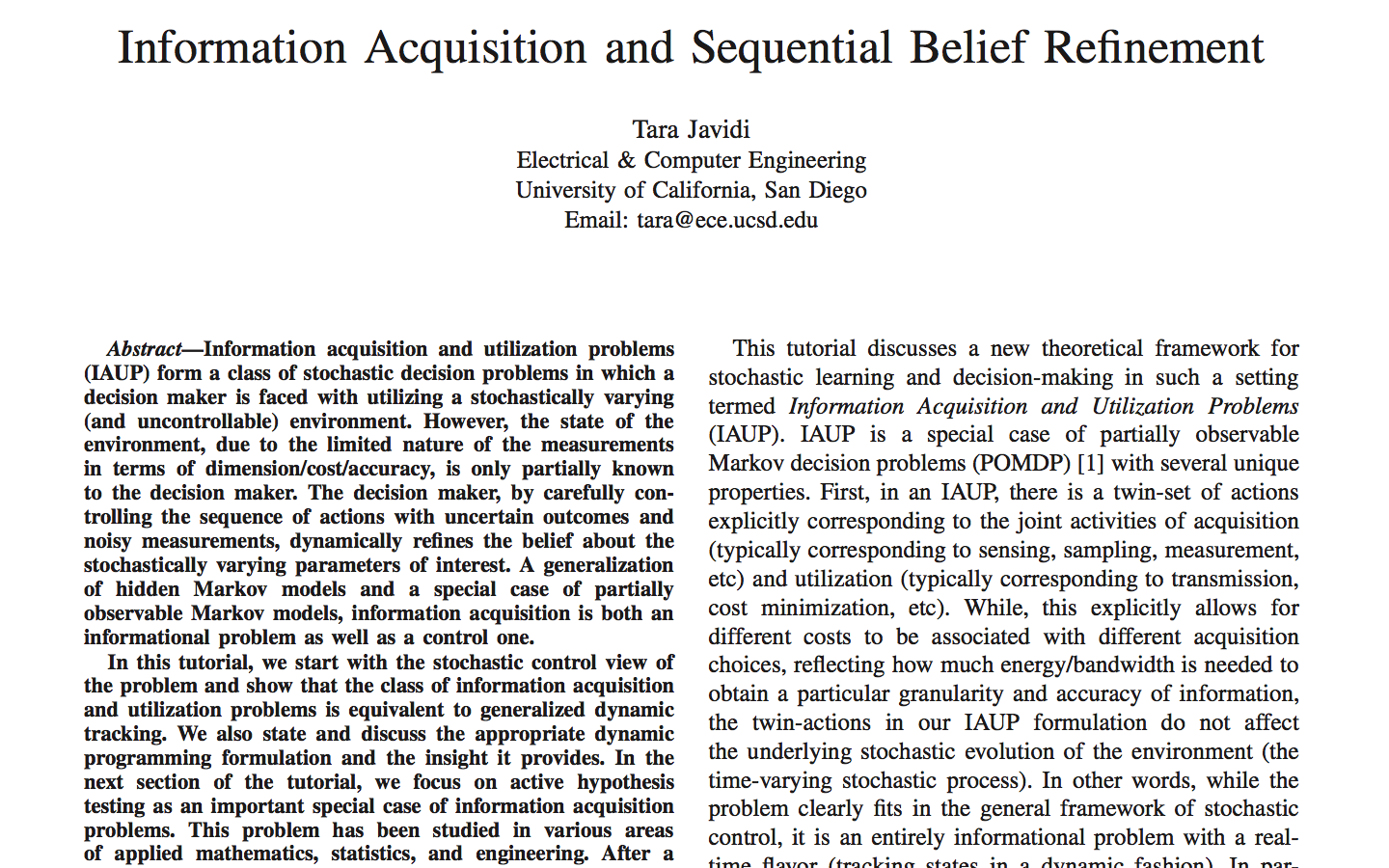
Information acquisition and utilization problems (IAUP) form a class of stochastic decision problems in which a decision maker is faced with utilizing a stochastically varying (and uncontrollable) environment. However, the state of the environment, due to the limited nature of the measurements in terms of dimension/cost/accuracy, is only partially known to the decision maker. The decision maker, by carefully controlling the sequence of actions with uncertain outcomes and noisy measurements, dynamically refines the belief about the stochastically varying parameters of interest. A generalization of hidden Markov models and a special case of partially observable Markov models, information acquisition is both an informational problem as well as a control one.
Download
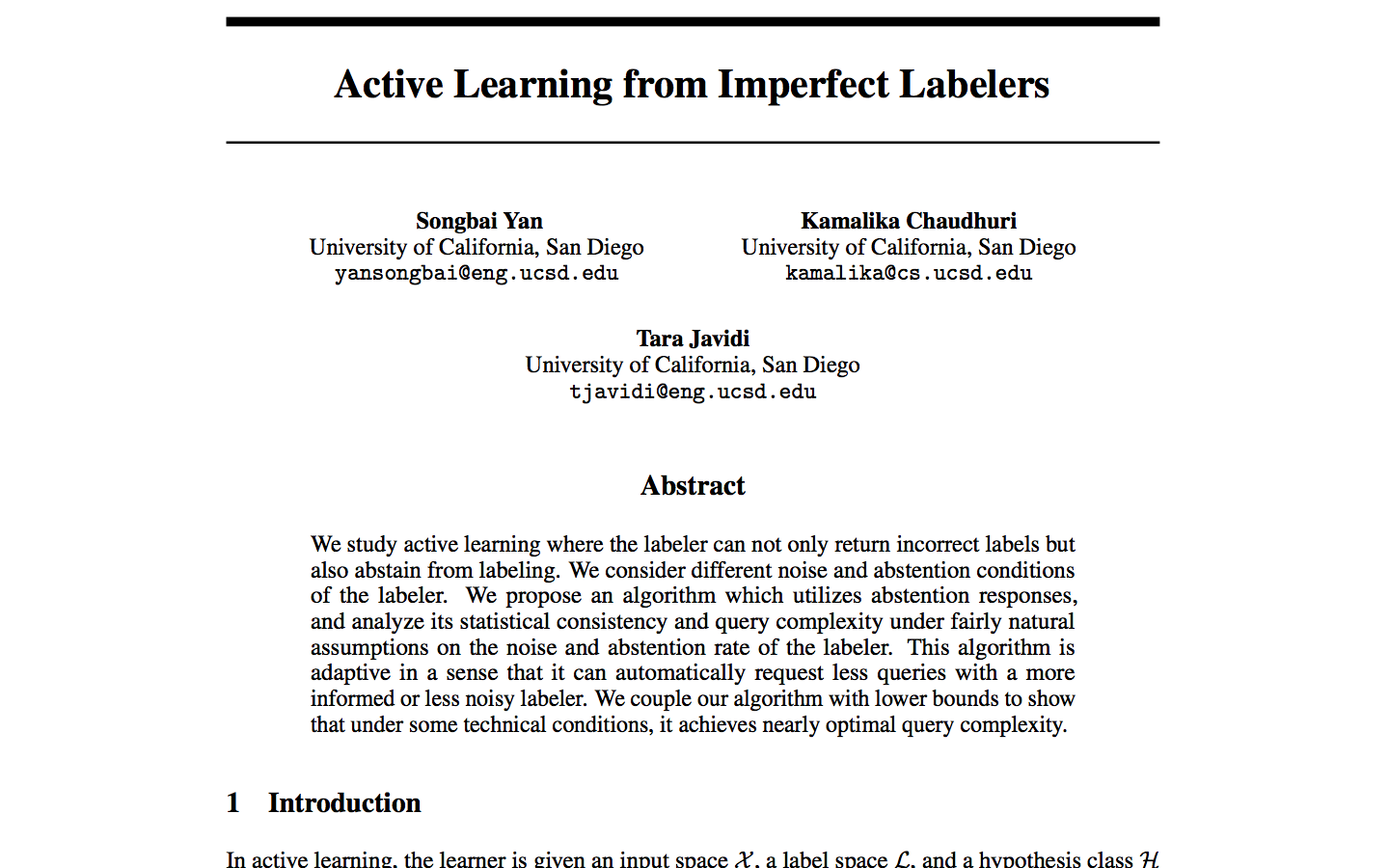
We study active learning where the labeler can not only return incorrect labels but also abstain from labeling. We consider different noise and abstention conditions of the labeler. We propose an algorithm which utilizes abstention responses, and analyze its statistical consistency and query complexity under fairly natural assumptions on the noise and abstention rate of the labeler. This algorithm is adaptive in a sense that it can automatically request less queries with a more informed or less noisy labeler. We couple our algorithm with lower bounds to show that under some technical conditions, it achieves nearly optimal query complexity.
Download
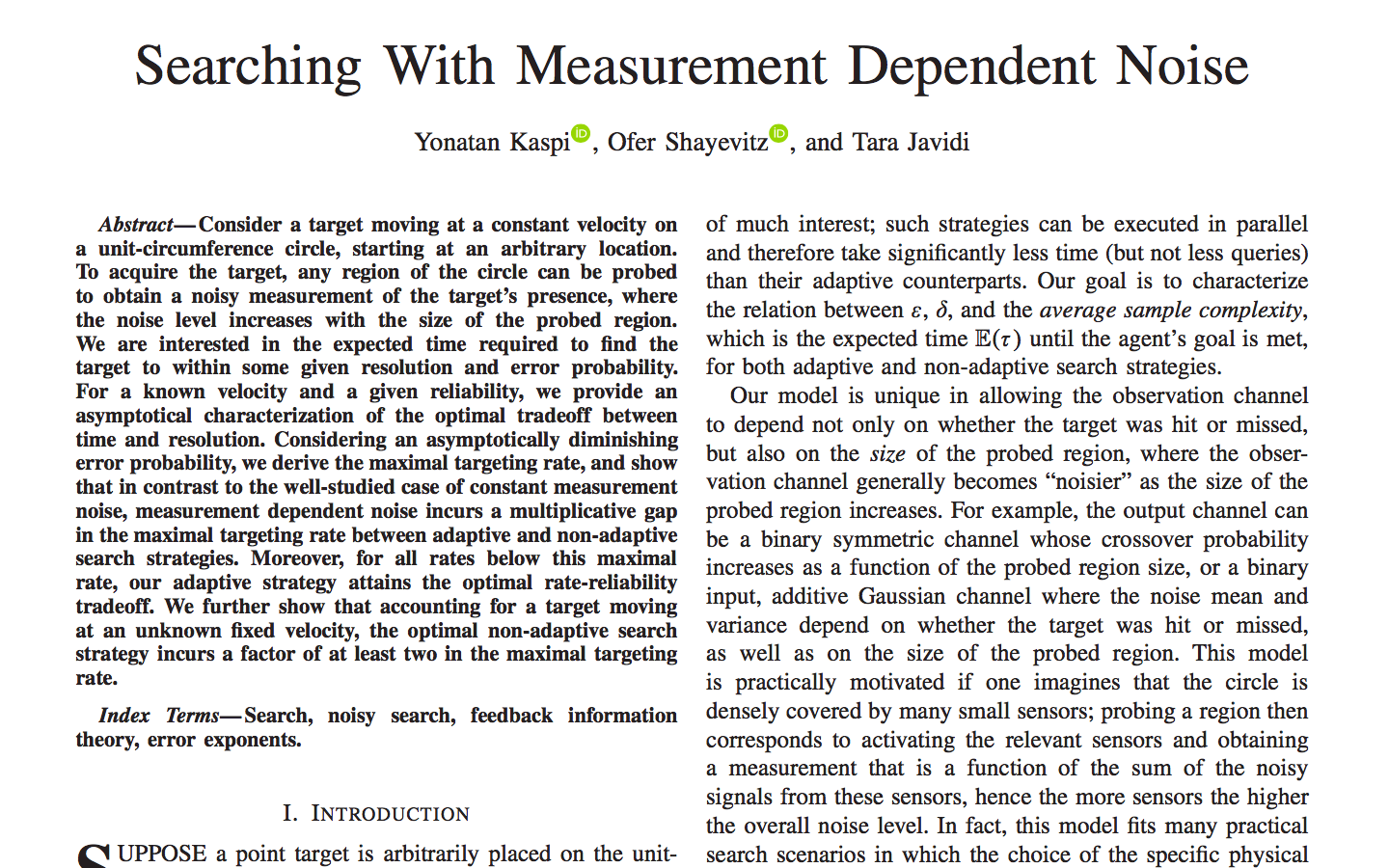
Consider a target moving at a constant velocity on a unit-circumference circle, starting at an arbitrary location. To acquire the target, any region of the circle can be probed to obtain a noisy measurement of the target’s presence, where the noise level increases with the size of the probed region. We are interested in the expected time required to find the target to within some given resolution and error probability. For a known velocity and a given reliability, we provide an asymptotical characterization of the optimal tradeoff between time and resolution. Considering an asymptotically diminishing error probability, we derive the maximal targeting rate, and show that in contrast to the well-studied case of constant measurement noise, measurement dependent noise incurs a multiplicative gap in the maximal targeting rate between adaptive and non-adaptive search strategies. Moreover, for all rates below this maximal rate, our adaptive strategy attains the optimal rate-reliability tradeoff. We further show that accounting for a target moving at an unknown fixed velocity, the optimal non-adaptive search strategy incurs a factor of at least two in the maximal targeting rate.
Download
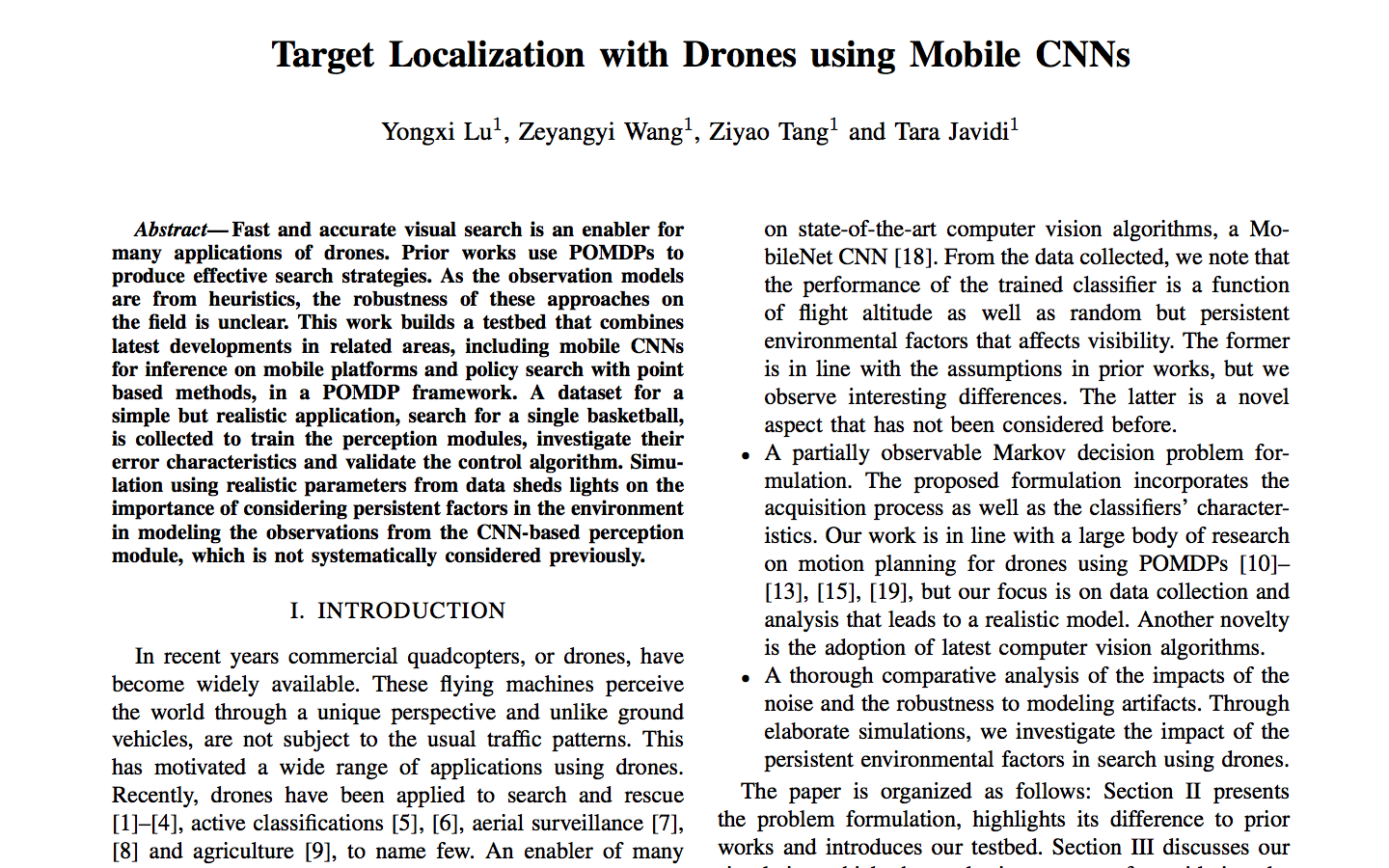
Fast and accurate visual search is an enabler for many applications of drones. Prior works use POMDPs to produce effective search strategies. As the observation models are from heuristics, the robustness of these approaches on the field is unclear. This work builds a testbed that combines latest developments in related areas, including mobile CNNs for inference on mobile platforms and policy search with point based methods, in a POMDP framework. A dataset for a simple but realistic application, search for a single basketball, is collected to train the perception modules, investigate their error characteristics and validate the control algorithm. Simu- lation using realistic parameters from data sheds lights on the importance of considering persistent factors in the environment in modeling the observations from the CNN-based perception module, which is not systematically considered previously.
Download
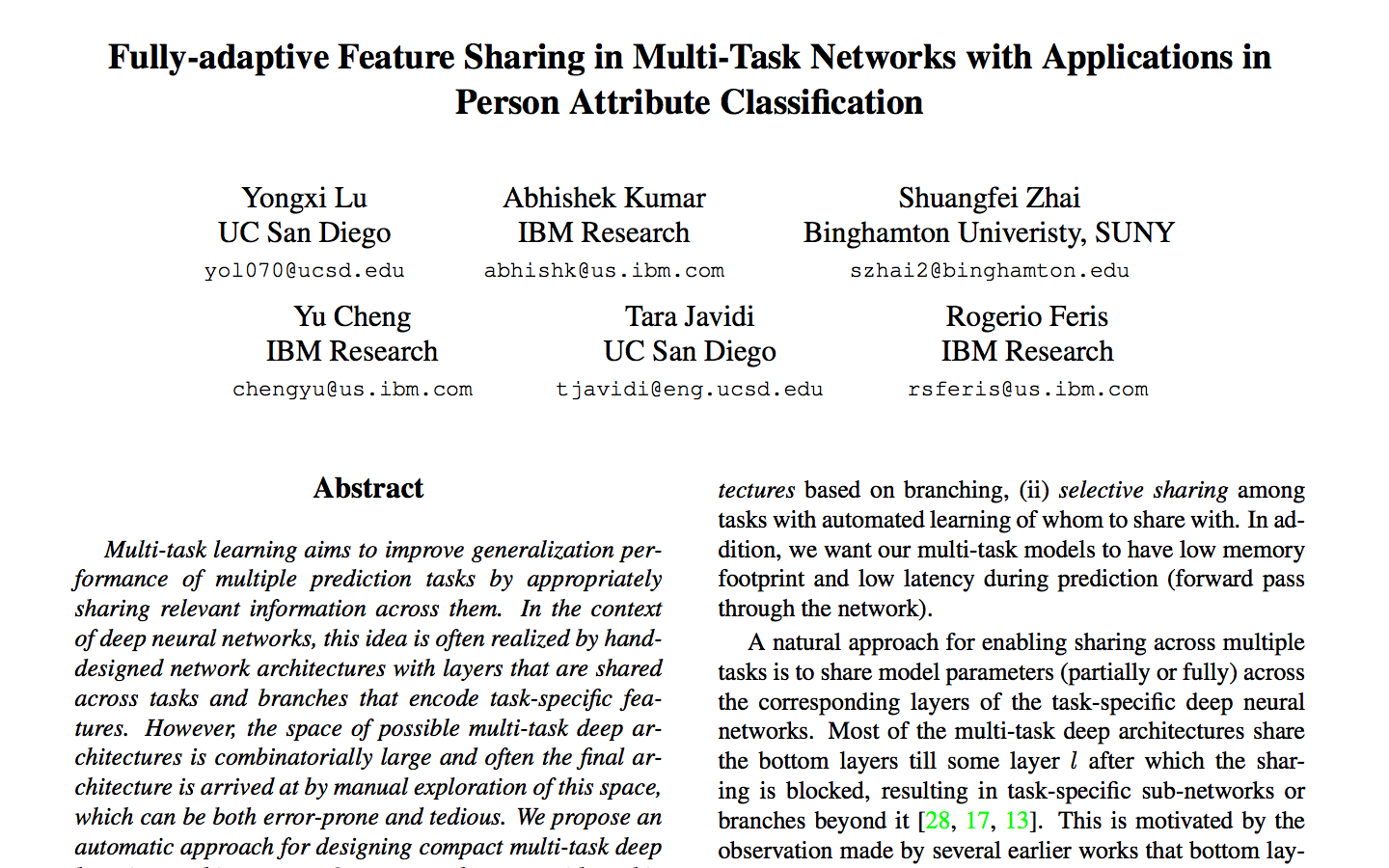
Multi-task learning aims to improve generalization performance of multiple prediction tasks by appropriately sharing relevant information across them. In the context of deep neural networks, this idea is often realized by hand- designed network architectures with layers that are shared across tasks and branches that encode task-specific features. However, the space of possible multi-task deep architectures is combinatorially large and often the final architecture is arrived at by manual exploration of this space, which can be both error-prone and tedious. We propose an automatic approach for designing compact multi-task deep learning architectures. Our approach starts with a thin multi-layer network and dynamically widens it in a greedy manner during training. By doing so iteratively, it creates a tree-like deep architecture, on which similar tasks reside in the same branch until at the top layers. Evaluation on per- son attributes classification tasks involving facial and cloth- ing attributes suggests that the models produced by the pro- posed method are fast, compact and can closely match or exceed the state-of-the-art accuracy from strong baselines by much more expensive models.
Download
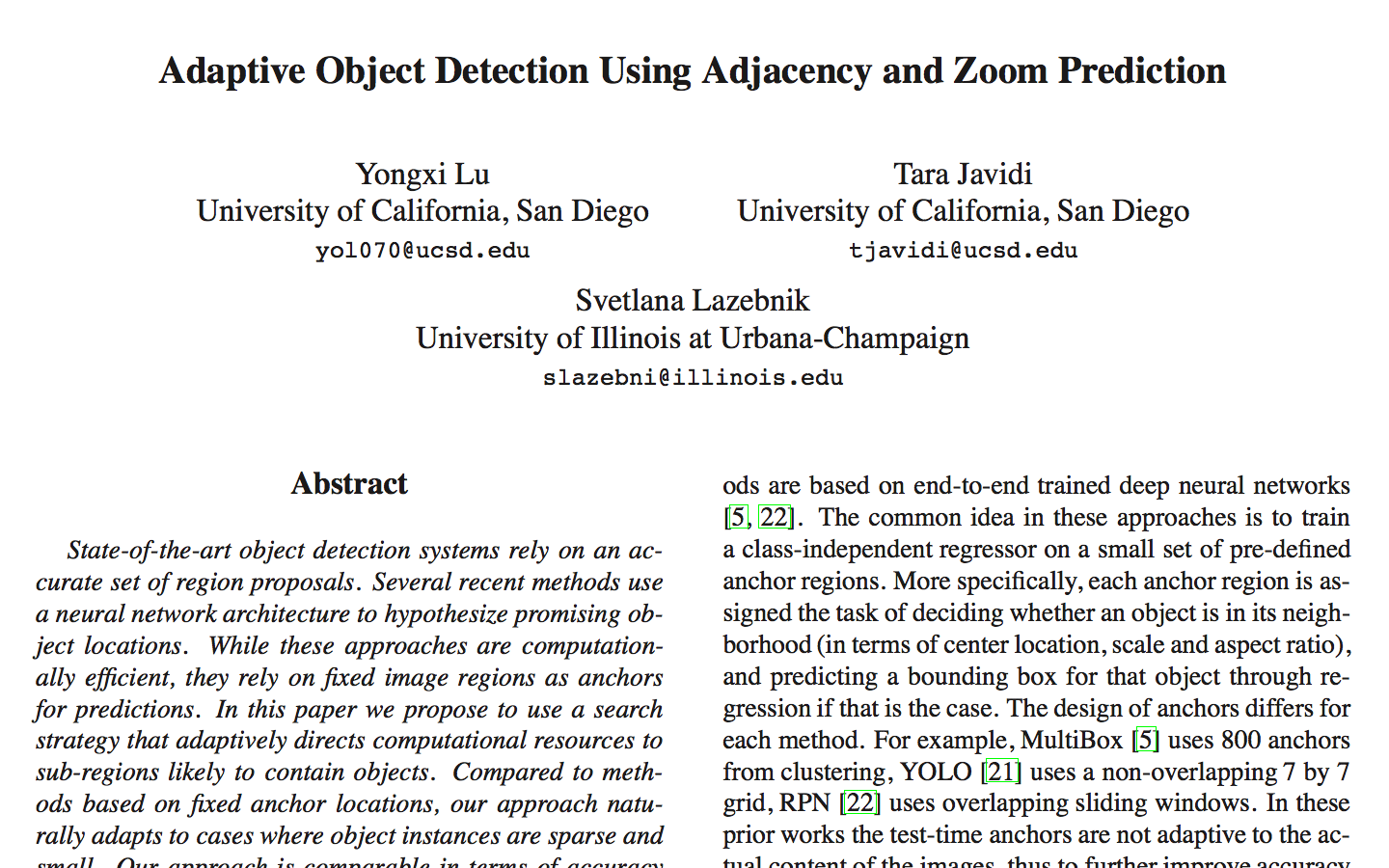
State-of-the-art object detection systems rely on an accurate set of region proposals. Several recent methods use a neural network architecture to hypothesize promising object locations. While these approaches are computationally efficient, they rely on fixed image regions as anchors for predictions. In this paper we propose to use a search strategy that adaptively directs computational resources to sub-regions likely to contain objects. Compared to methods based on fixed anchor locations, our approach naturally adapts to cases where object instances are sparse and small. Our approach is comparable in terms of accuracy to the state-of-the-art Faster R-CNN approach while using two orders of magnitude fewer anchors on average.
Download





